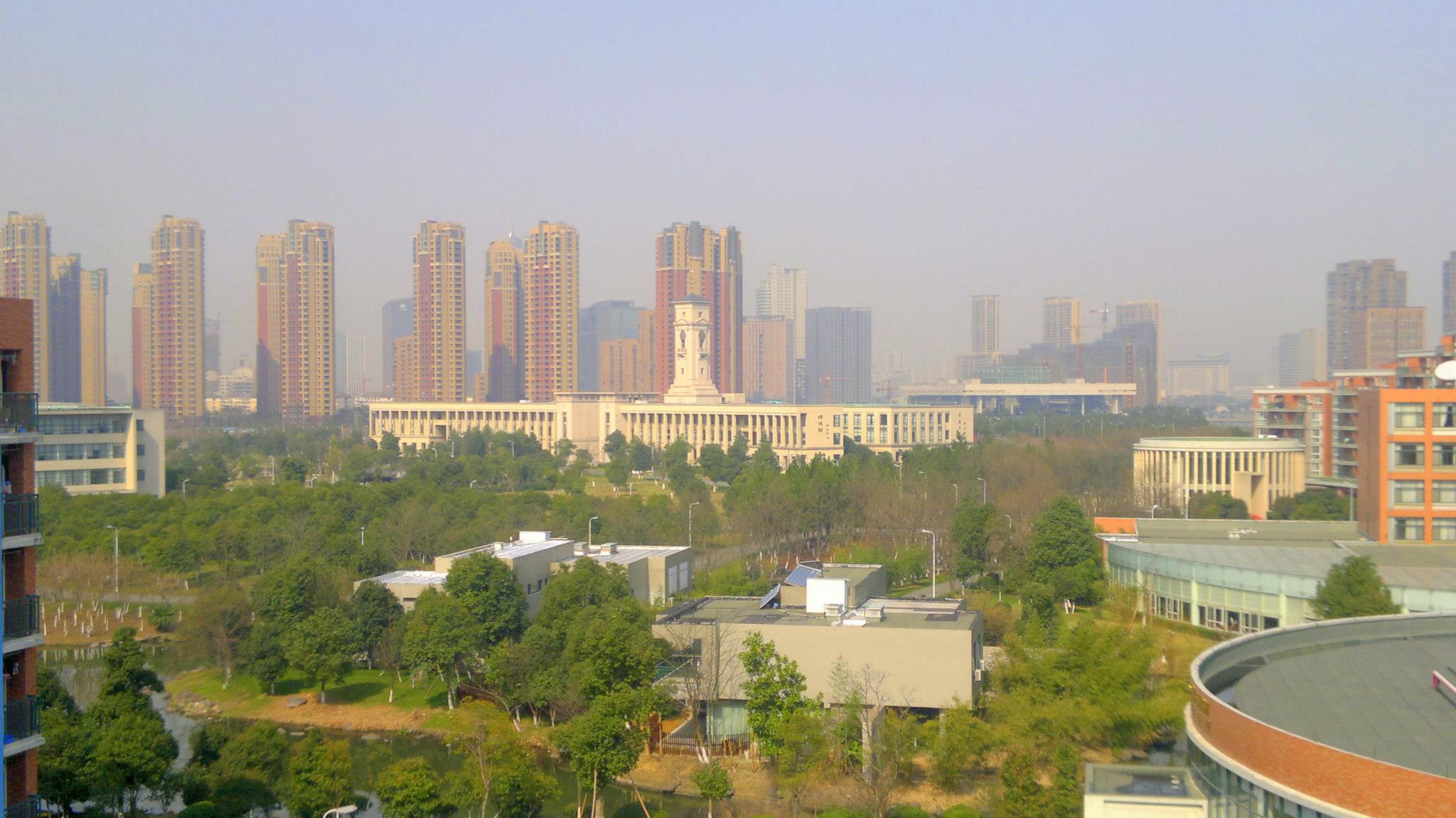
June 15, 2013, by Tony Hong
Reflections on being a student at UNNC
By Felicity Woolf,
First Year Part Time Student, MA Contemporary Chinese Studies, The University of Nottingham Ningbo China.
It’s exactly 40 years since I started my BA degree at the University of Exeter. Now, I’m enrolled as a part-time student, studying for an MA in Contemporary Chinese Studies. In the first semester I took two modules, each with a seminar group. In one I was the only non-Chinese student and of course I was somewhat older than the rest. We studied research methods and theories in communication studies. The students were serious and assiduous. The lecturer wanted to find out something about their assumptions and knowledge base. He put a poem – ‘I wondered lonely as a cloud’ on the whiteboard, complete with pictures of daffodils. Yes, they did all know about content analysis, and yes they had read the poem. A young woman in my group talked confidently about Derrida as an entry point for discussing media content. I was overwhelmed – I thought of myself at 20 – certainly unaware of anything called theory, and of course not taking a Masters degree taught through a foreign language.
The other seminar group was international – about 30 students studying the rise of modern China. Most were British exchange students from Nottingham, UK but there was a sprinkling of other students from all over the world, including my three fellow postgraduates from the USA, China and Thailand. The British students were well informed about China, they could argue their point, their presentations were very well organised and they spoke confidently. I felt proud of the western style of education. At the same time I was horrified by the generally conservative nature of many of the opinions expressed by the British students – especially in relation to monarchy – no republicans there!
This term I took a history module about Ningbo, based on the study of primary sources. We visited the city archive, the main library, a rural village, where we interviewed some elderly locals, and a nearby Buddhist temple. I focused on the world of 19th-century Ningbo, researching an incident in 1862. The city was captured by a group which was rebelling against the Manchu dynasty, and then recaptured by the British (with a bit of help from the French). This exercise made me engage with Ningbo in completely new ways. My starting point was two beautiful maps – one now in the National Archive in Kew, and drawn by a British captain, and one in the Library of Congress in Washington, in the Chinese style, perhaps drawn by a local official.
The British map showing the outline of the city walls made me look again at the modern map of Ningbo, and it is easy enough to trace their foundations in present day streets and canals. The modern city centre is essentially contained within them. The Chinese map included the Bridge of Boats, which crossed the river just south of where the Yuyao and Yong rivers join. I discovered after a trip to Ningbo museum that this bridge survived until at least 1985. The main lake – Moon Lake – is still there too, although Sun Lake has been filled in. The British map showed ‘Laowaitan’ the area of the foreign settlement across the river from the walled city. It eventually included a ‘Bund’ – a waterfront and wharf for trading set up in the style of Shanghai. There are a couple of old colonial style houses that survive next to a Catholic church, and another building that was the customs house. Now these and other buildings house the pubs, clubs and night spots of Ningbo. This is where my preferences also differ from those of most of my fellow students. I prefer the food hall across the river in the fancy new shopping centre, and strictly in daylight.
No comments yet, fill out a comment to be the first

Leave a Reply